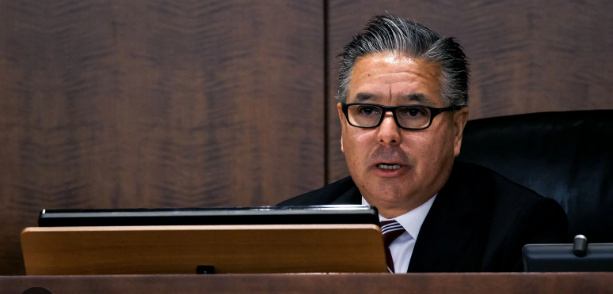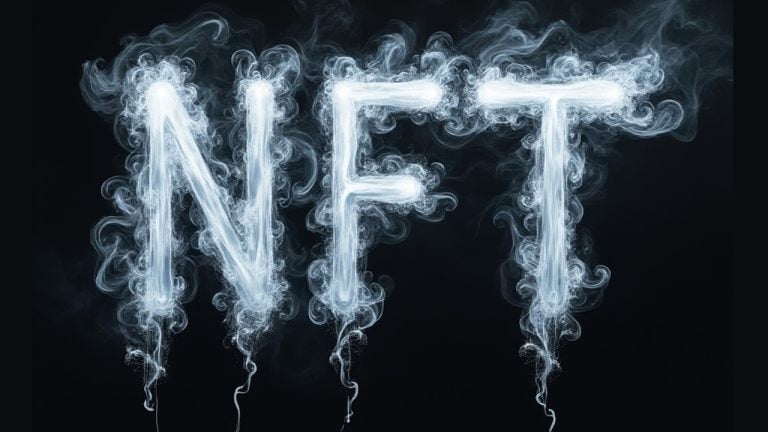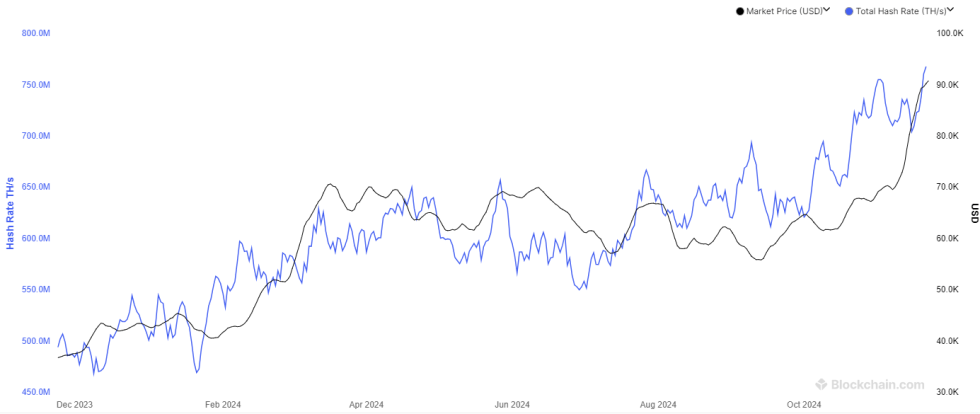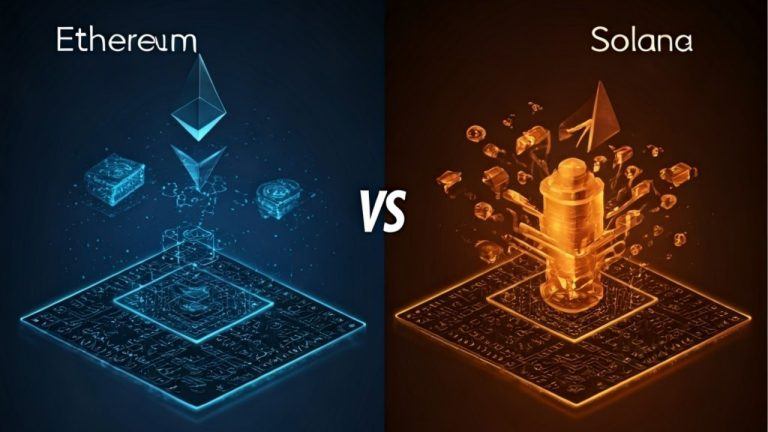
The latest fork on the “roadmap” shores up the network’s new validation mechanism while finally allowing stakers access to their ETH rewards.
Ethereum’s Shanghai/Capella upgrade — also known by the portmanteau Shapella — may not be the technical marvel of last year’s “Merge” or introduce turbocharged speeds to the network.
Volumes of over 100,000 transactions per second will have to wait for future “danksharding” upgrades, according to the Ethereum Foundation.
But the hard fork remains an important step on Ethereum’s roadmap to the future, i.e., further shoring up the network’s new validation mechanism while (potentially) removing barriers for institutional investors.
Currently scheduled for 10:27 pm UTC on April 12, the upgrade will allow stakers to unlock their Ether (ETH) rewards — or even exit staking entirely — for the first time since September’s Merge.
It's happening
— timbeiko.eth ☀️ (@TimBeiko) March 28, 2023
Shapella is scheduled on mainnet for epoch 194048, scheduled for 22:27:35 UTC on Apr. 12, 2023
Client releases compatible with the upgrade are listed in the announcement below https://t.co/I0hSv9lnjz
Pre-fork publicity hasn’t matched that surrounding last autumn’s change of consensus mechanisms from proof-of-work to a proof-of-stake (PoS). “This time, we won’t have a war room,” Freddy Zwanzger, Ethereum ecosystem lead at Blockdaemon, told Cointelegraph. Still, “there’s always risks” when one reshuffles the deck like this.
Ethereum’s stakers and validators will shortly be able to withdraw $32 billion of Ether from the Beacon Chain, which accounts for about 15% of the ETH’s circulating supply, according to Coinbase’s April 5 newsletter. Some worry that the upgrade, also known as the Shanghai hard fork, may lower the overall number of validators and put selling pressure on the network, among other concerns.
“Every hard fork brings some upgrade risk,” Paul Brody, EY’s global blockchain leader, told Cointelegraph, especially in cases like this where you’re enabling withdrawals. On the technical side, there could be bugs latent since “day zero” in some of the network’s staking smart contracts, for example, that may not emerge until the withdrawal date — though Brody doesn’t think that’s likely.
The upgrade should mitigate risks for investors. “Lower volatility plus a yield makes for a more familiar and less risky asset to hold long-term,” Rich Rosenblum, co-founder and president at GSR, a crypto market-making firm, told Cointelegraph.
More institutional investors?
Will Shapella really attract more institutional investors to the blockchain, as some believe? Research and brokerage firm AB Bernstein stated in a late-February research report that the upgrade could bring in staking from new institutional investors, and Blockdaemon’s Zwanzger, whose firm has many institutional clients, foresees more interest in Ethereum staking opportunities from large professional investors. Some institutional investors have been reluctant to lock up funds without a clear withdrawal option.
“There’s probably going to be a queue for the first couple of weeks,” Zwanzger said. “So they might be better off waiting until that comes down to normal levels.”
According to Rosenblum, “Once the PoS network is fully operational, more institutions will feel comfortable holding ETH, especially once the staking yield becomes more accessible.”
EY’s Brody, on the other hand, doesn’t see much of a change. “A lot of the big institutional investors that we know and work with are basically sitting on the sidelines. They want to comply, but they want to be more comfortable that they know what the rules are.” Comprehensive crypto reform legislation in the United States would probably be more likely to get them off the sidelines.
Longer-term risks
So what about regulatory risk, particularly in the United States? For years Bitcoin (BTC) and Ether were thought to be impervious to Securities and Exchange Commission (SEC) scrutiny, with many U.S. regulators tacitly agreeing that the native coins for decentralized systems like these were more like commodities than securities, placing them under the Commodity Futures Trading Commission’s jurisdiction. But with Ethereum’s move to a staking validation mechanism, some think the SEC may now have Ethereum in its sights.
Still, “I wouldn’t consider it a significant risk for the network,” even if that happens, said Zwanzger. The Ethereum protocol is global, and not all jurisdictions will likely share the SEC’s view of what needs regulating. Of course, other countries could ultimately choose to follow the U.S., so one never knows.
Others worry that Ethereum’s move to staking may herald increasing network centralization. In March, Cointelegraph reported that “concentration of ETH staked through third parties raises concerns over decentralization at Lido and Coinbase in particular.”
Recent: Crypto audits and bug bounties are broken: Here’s how to fix them
“The battle to keep Ethereum sufficiently and properly decentralized is probably one of the most important ones out there in terms of governance and organization,” Brody told Cointelegraph. If any single staking partner were to have 33% of the ecosystem, that “could potentially — and I say potentially — have an impact on transaction finality, although you would get slashed for doing so.” If any single or cooperating group of entities controlled two-thirds of the staking infrastructure, “you would have the potential to change the governance of the chain” — something that would be “very suboptimal,” he said.
But these dangers remain largely theoretical given how things have evolved since the Merge. “A relatively vibrant staking ecosystem” has emerged, said Brody, with “a few highly centralized custodial players” but also “some semi-centralized custodial players” like Lido, which is a liquid staking pool leader that invests with funds from tens of thousands of individual crypto wallets. There are also prominent staking groups that are “trying to be more fully decentralized,” like the Rocket Pool, he added.
“As long as this remains a very competitive ecosystem,” dangers from centralization are unlikely, Brody continued. Moreover, as more enterprise users join the network and become de facto stakeholders, including “Fortune 1000” companies, the system “becomes quite heavily decentralized.”
Zwangzer said that centralization was more of a threat in the pre-Merge days when a few proof-of-work pools dominated ETH mining. In any event, he added:
“I don’t think this is going to become a problem as long as we can keep the centralized [cryptocurrency] exchanges at bay.”
“The golden age of digital monopolies”
One might wonder why decentralized digital networks are even important for commerce and society. Cointelegraph posed this question to EY’s Brody, who believes that public blockchains, especially Ethereum’s, “are going to be the big global winners,” with the caveat that public blockchains will first need to be “privacy-enabled.”
Decentralized blockchain-based networks simply offer the world’s best hope to develop monopoly-resistant global digital marketplaces, he said. “We live in the golden age of digital monopolies” like Amazon, Google and Facebook, mainly because that is simply the nature of networks. According to Metcalfe’s Law, as a network grows, its value increases exponentially. The first to market has a good chance to dominate.
But monopolies come at a social and economic cost. New York University finance professor Thomas Philippon has estimated that monopolies cost the median American family $300 a month, and the inefficiencies they entail “deprives American workers of about $1.25 trillion of labor income.” According to Brody, “If we want to fully digitize the economy, and we want to do it without digital monopolies, we should be doing it on public decentralized systems.”
In recent years, EY Global has been devoting significant resources to “industrializing blockchain privacy technology” through its Starlight project, a zero-knowledge proof compiler that enables secure, private business logic on the public Ethereum blockchain. The project is still in beta, but developers can now experiment with building privacy-enabled features for solidity smart contracts. The goal is to enable blockchain-based business agreements where business logic is shared at the network level, but privacy from potential competitors is still preserved.
This last point is critical. In the business world, no company wants another firm to know its commercial secrets, after all. A pharmaceutical manufacturer, for instance, may want to track its medicine packets through its supply chain, beginning with the drug’s raw materials, through to distributors and hospitals.
Each packet can be attached to a nonfungible token recorded on a public blockchain. The pharma firm may also want to attach some business agreements as well. For example, a distributor selling one million units of the manufacturer’s drug could trigger an automatic rebate payment to the distributor via a smart contract. But the pharma firm doesn’t want the whole world to know about this rebate agreement.
“We are starting to build a blockchain-based inventory management system that’s going to use privacy technology to manage those individual tokens,” said Brody. It’s starting on a private chain, but they “are building it with privacy technology because they want to go on to the public chain so that anybody can join with them using these standards.” Brody added:
“So essentially, you’ll be able to take an entire business contract and supply chain operations and run it under privacy on public Ethereum at a cost-effective level.”
Tasks like tracking products and attaching business agreements to digital ledgers may seem mundane, but their economic impact could be huge. “Somewhere between 2 and 5% of all the money on earth in corporations is spent administering stuff, keeping track of it, moving it around,” said Brody. “By using smart contracts and tokenized assets, we could drive that down dramatically.”
Feature: The state of the Bitcoin Lightning Network in 2023
All of this brings us back to Shapella and why such upgrades matter. A trouble-free launch would be further evidence that Ethereum is still on course to achieve the three key goals laid out in the Ethereum Foundation’s roadmap: scalability, security and sustainability. Or as Blockdaemon’s Zwanzger told Cointelegraph:
“It also will reinforce the confidence in the network and in the protocol design so that a developer launching a project can be sure that, for example, gas fees and scalability will not be a big problem over the next one or two years.”

You can get bonuses upto $100 FREE BONUS when you:
💰 Install these recommended apps:
💲 SocialGood - 100% Crypto Back on Everyday Shopping
💲 xPortal - The DeFi For The Next Billion
💲 CryptoTab Browser - Lightweight, fast, and ready to mine!
💰 Register on these recommended exchanges:
🟡 Binance🟡 Bitfinex🟡 Bitmart🟡 Bittrex🟡 Bitget
🟡 CoinEx🟡 Crypto.com🟡 Gate.io🟡 Huobi🟡 Kucoin.




















Comments